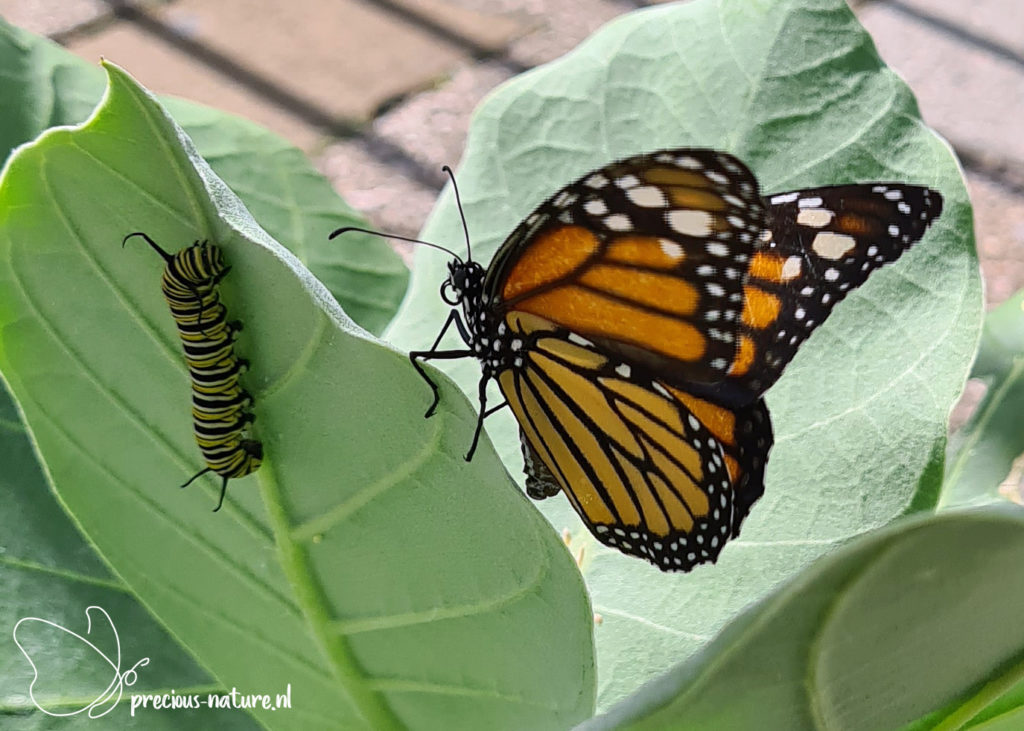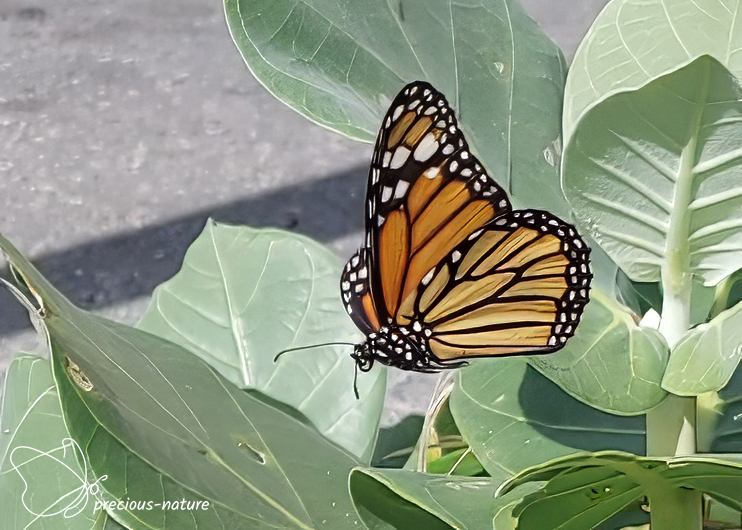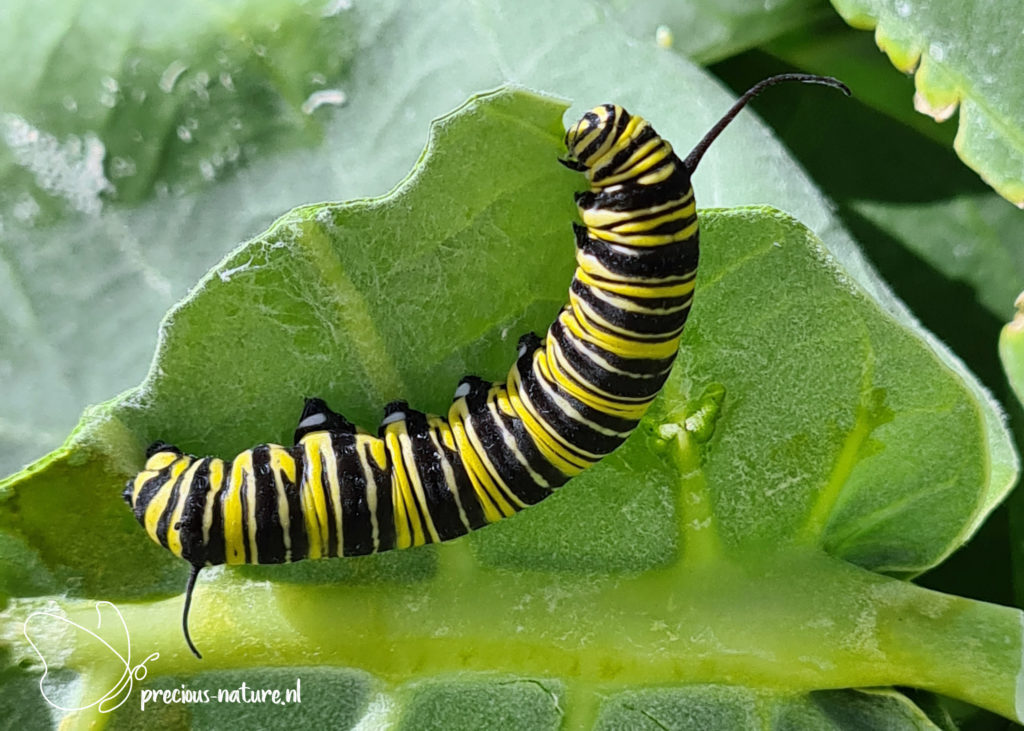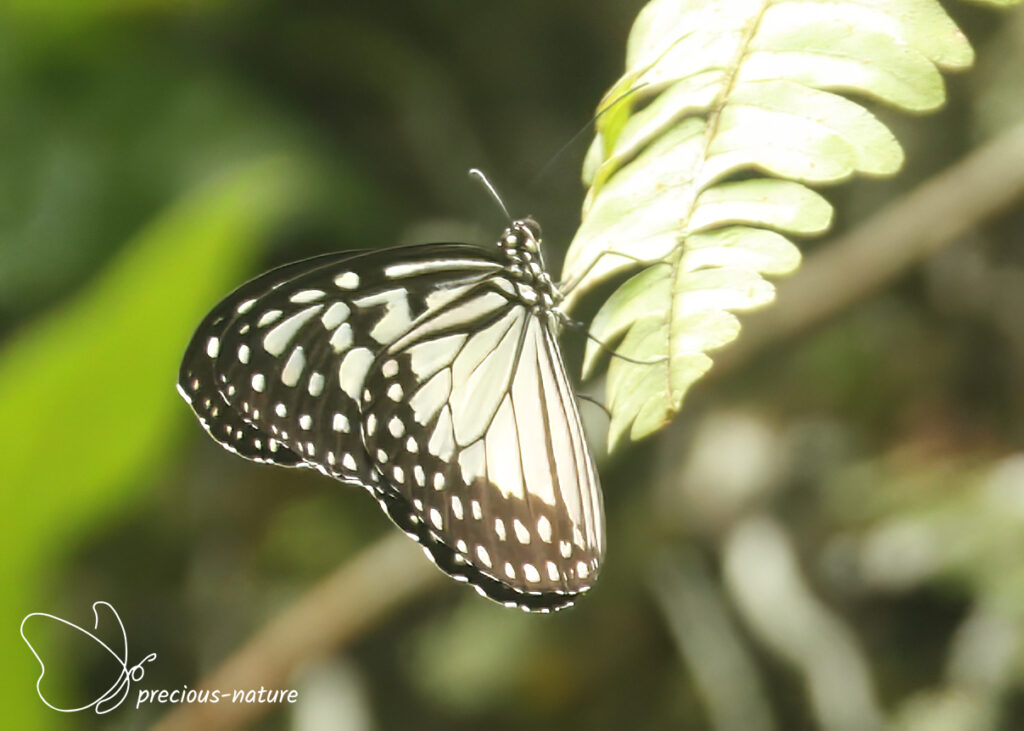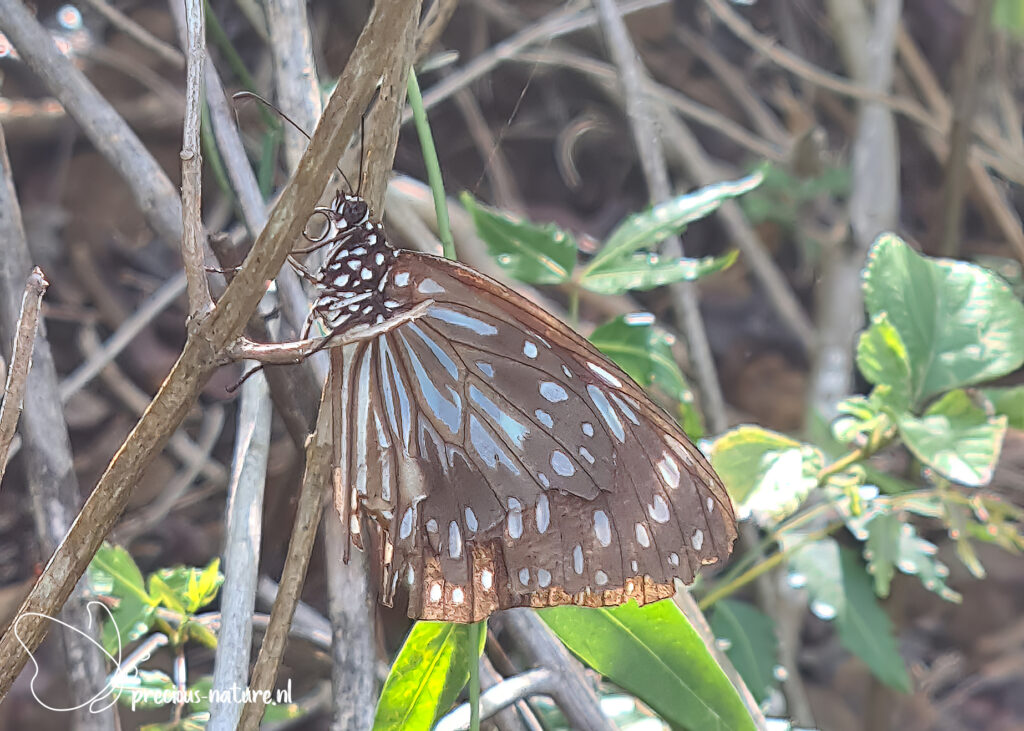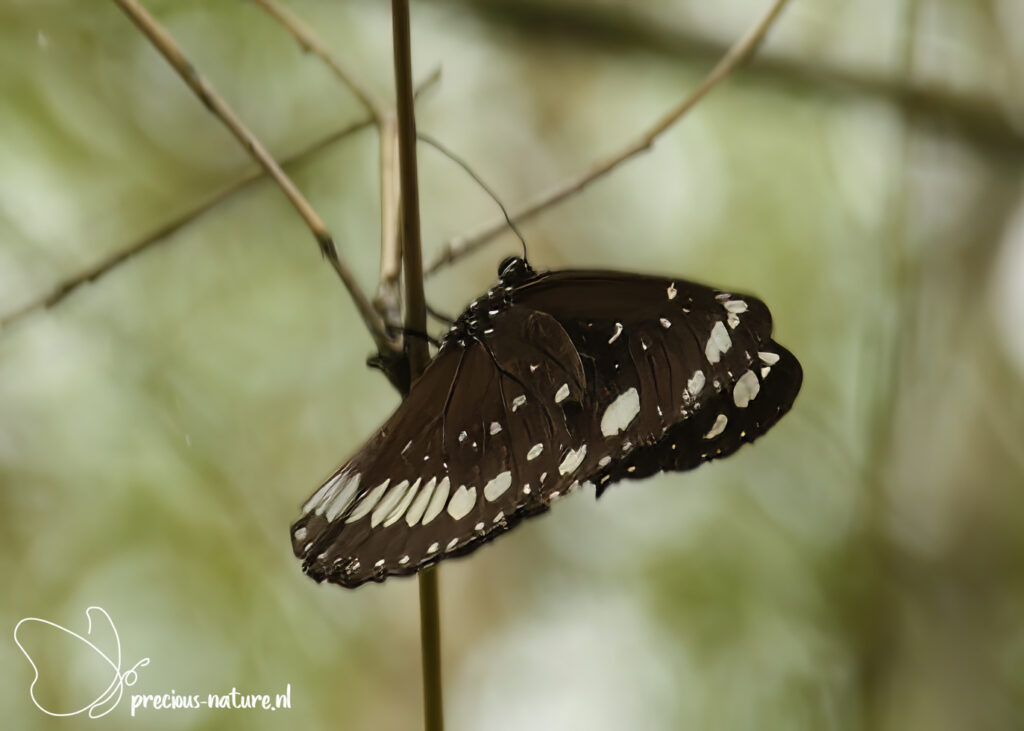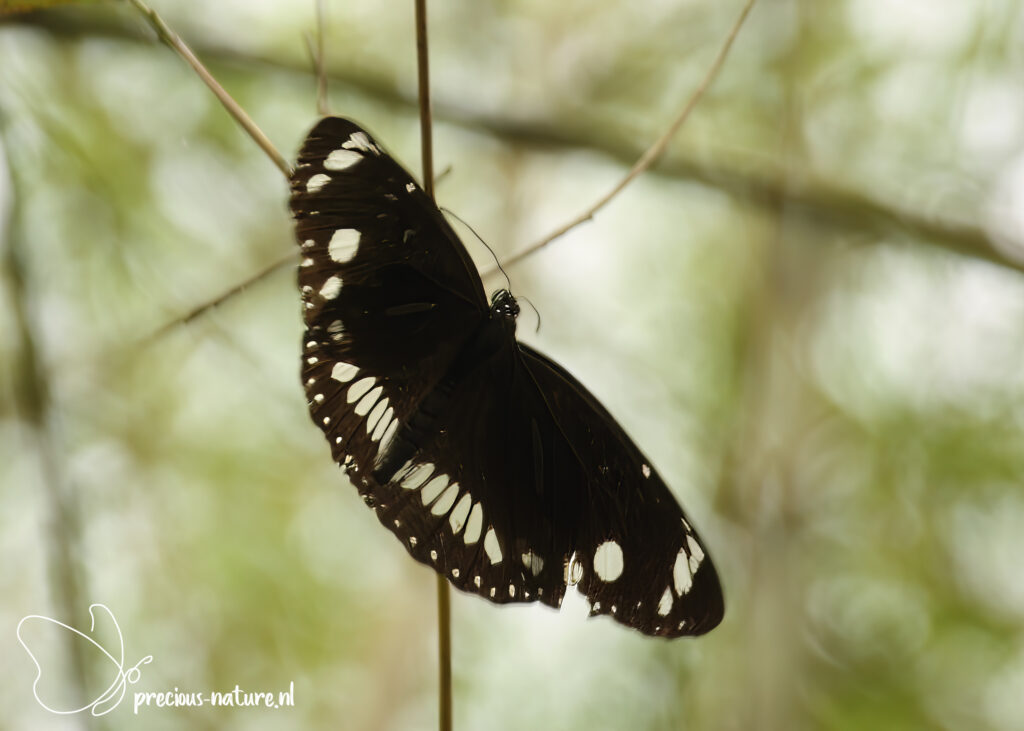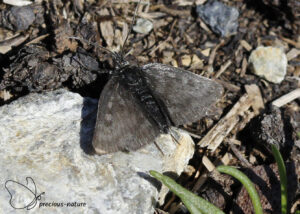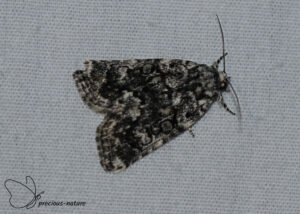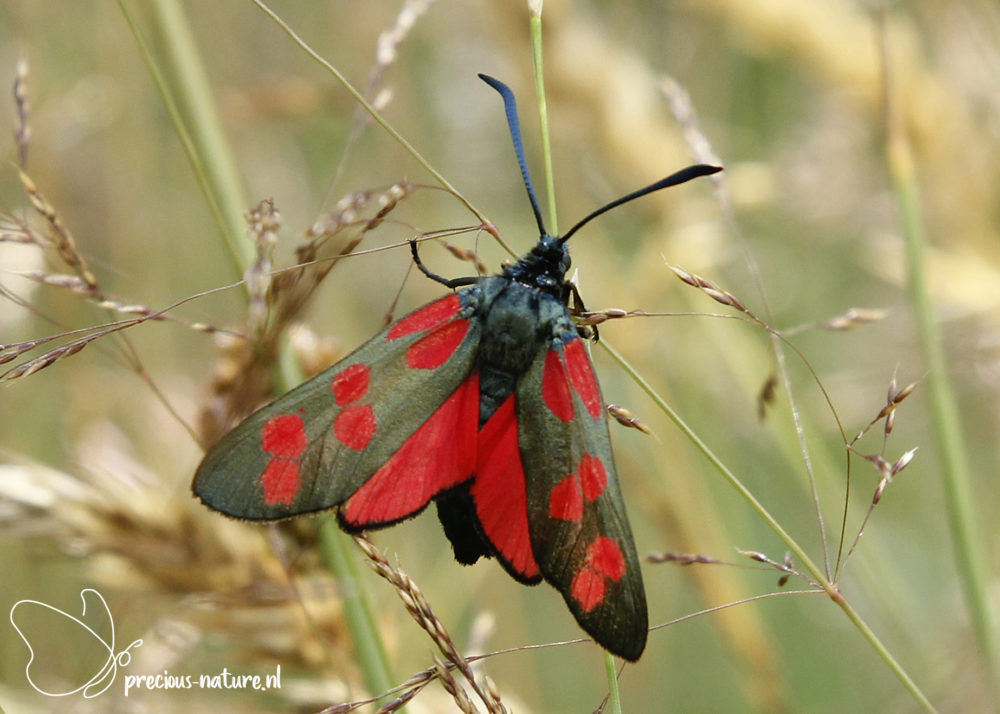The Milkweed Butterflies (Danainae) are large and beautifully coloured tropical butterflies and belong to the family of Brush-footed Butterflies (Nymphalidae). The name of this subfamily refers to the host plant, mainly in the milkweed family. Since the monarch cannot tolerate temperate zone winters, it will only be found in (sub) tropical areas. In Southern Europe, there are only two types. The top of these butterflies is orange with a black trailing edge and numerous white spots. In the tropical area, there are more variants, even with transparent wings.
Tribe: Danaini
Subtribe: Danaina
Genus: Danaus
Monarch Butterfly – 2021 (CW)
(NCBI-index: 278856)
During a holiday in Curaçao, my daughter and I initially only saw the Monarch Butterfly (Danaus plexippus) flying around. Still, not much later, we noticed that the plant it was sitting on was full of caterpillars. This orange butterfly has clear black veins that reveal the cells within. A clear, broad black band with many small white spots can be seen along the trailing and rear edges. On the top of the forewing, close to the wingtip, a black band with large white spots runs from the leading edge across the wing to the rear edge. The Monarch Butterfly is native to North America and South America, with distinct populations. The megalippe subspecies does not migrate and is mainly found on islands in the Caribbean. The subspecies nigrippus occurs in Central America, south of Nicaragua, and north of South America, and it is also not a migrant. The subspecies plexippus occurs in North America and emerges from the wintering site in the spring to migrate east or north in the summer. The wingspan is 89-102 mm, and the flight period is several generations, from June to November. Host plant: silk plants. Dutch name: Monarchvlinder. Frisian name: –
Flying period:

Tribe: Danaini
Subtribe: Danaina
Genus: Ideopsis
Grey Glassy Tiger – 2022 (INA)
(NCBI-index: 1.324356)
The Grey Glassy Tiger (Ideopsis juventa) is dark grey or black with two rows of round white dots along the edges of its wings and elongated white spots closer to the body. The elongated white spots appear to radiate from the thorax. The head is black with white spots, while the abdomen is greyish-white. The wingspan is 70-80 mm. Host plant: Chinese violet. Dutch name: Grijze tijger. Frisian name: –
Tribe: Danaini
Subtribe: Danaina
Genus: Tirumala
Blue Tiger – 2022 (INA)
(NCBI-index: 127260)
During a challenging hike in hot weather in the mountains, I came across the Blue Tiger (Tirumala hamata). The photo quality is poor, but the outline of the spotting pattern is visible on the black-brown wings. The spots are light blue. The bottom and top of the wings are identical. The male can often be recognised by the enlarged silver-grey spot in the centre of the hindwing. The head, like other monarch butterflies, is black with white spots. The wingspan is 70 mm. Host plant: Mangrove Waxflower Vine, Corky Milk Vine, Yellow Moonsoon Bells. Dutch name: Blauwe tijger. Frisian name: –
Tribe: Danaini
Subtribe: Euploeina
Genus: Euploea
Common Crow – 2022 (INA)
(NCBI-index: 127258)
The genus Euploea is very distinctive. All 59 known species are dark brown, and most have a double band of white spots on the underside of the wings and small white spots on the sides of the thorax. On the upper side, males of most species have a deep blue or purple sheen, but in the Common Crow (Euploea core), the upper side is similar to the underside and lacks any sheen. Males are often seen sucking moisture from damp patches. They also visit decomposing fruit on the forest floor. They also visit Senna and other leguminous plants to imbibe pyrrolizidine alkaloids that seep from the stems and seed pods. The butterflies process these alkaloids into toxins that protect them against insectivorous birds. At dusk, the butterflies gather in communal roosts. Usually, about a dozen cluster together, hanging from twigs in semi-shaded situations. In the dry season, sometimes a hundred or more butterflies can be found along dry river courses in wooded areas. The wingspan is 80-90 mm. Host plant: Ficus racemosa, Nerium oleander. Dutch name: Gewone kraai. Frisian name: –
Tribe: Ithomiini
Subtribe: Dircennina
Genus: Episcada
Salvin’s Clearwing – 2017 (CO)
(NCBI-index: 2184766)
The Salvin’s Clearwing (Episcada salvinia) is a butterfly not found in Europe. I spotted this butterfly in Medellín (Colombia). The fore and hindwings are transparent, and the black veins are visible. The edges of the wings are orange-brown with white spots on the tips. On the forewing, a short orange and a white band can be seen halfway from the costa. The grey-brown abdomen starts just behind the forebody, which is black and white striped, very thin, and thickens further back. There is a small orange spot on the back of the head. Host plant: tomato plant species. Dutch name: Glasvleugelvlinder. Frisian name: –

